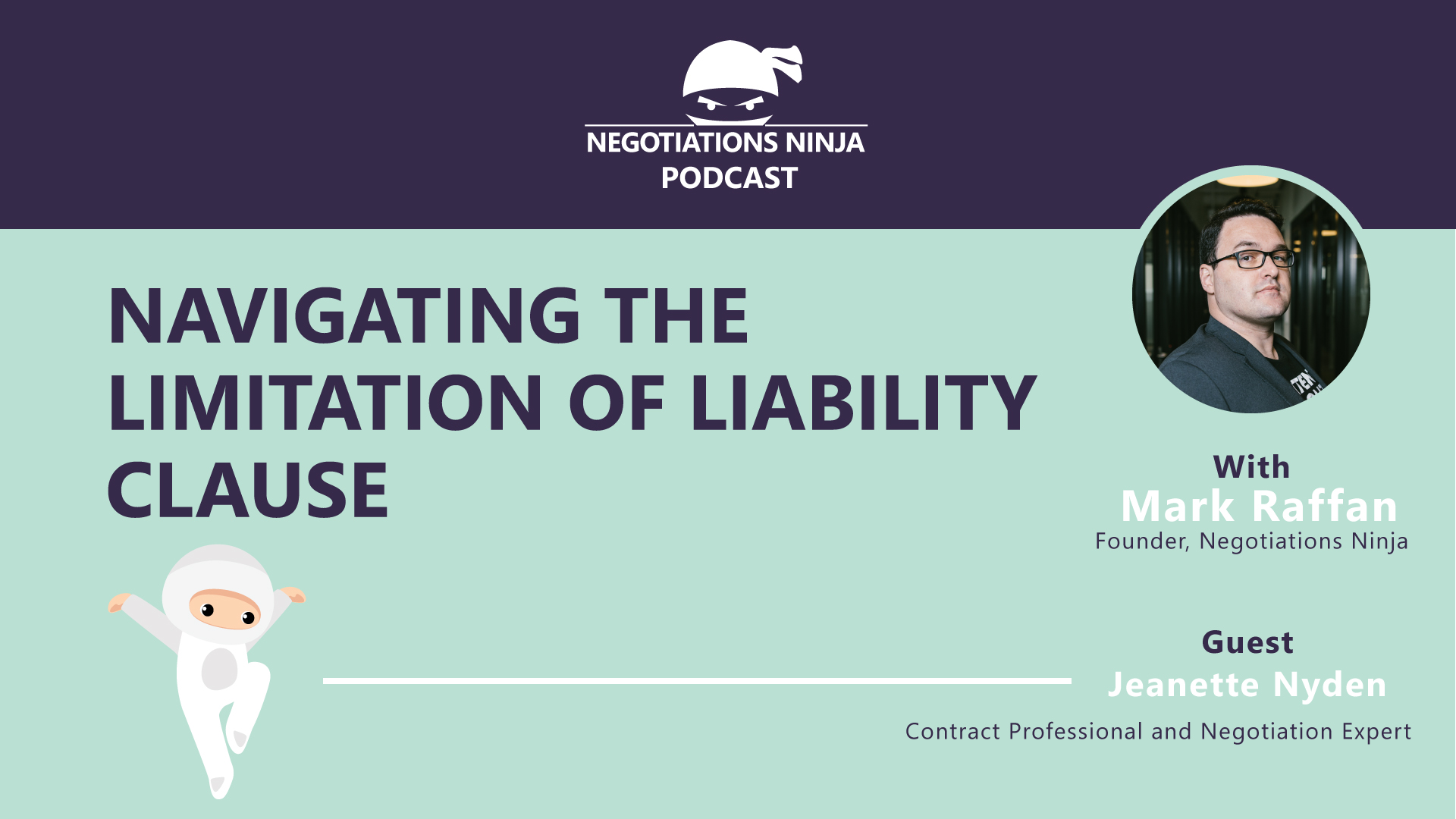How do you think about risk? What about mitigation and controls? What are the operational requirements necessary to carry out proper limitations of liability? One of the biggest issues I see is that commercial negotiation professionals don’t understand the fundamentals of where to start with limitations of liability. And determining the proper limitation of liability clause can be daunting. In this episode of Negotiations Ninja, Jeanette Nyden—contract professional and negotiation expert—walks through the concepts with me and shares three simple questions that can simplify the entire process.
Disclaimer: This is not legal advice. Go and seek professional legal counsel provided by your organization to get more detailed information. This episode is meant to be a starting point to help you think through these concepts.
Outline of This Episode
- [1:20] Learn more about Jeanette Nyden
- [3:47] Understanding the limitations of liability clause
- [16:46] Procurement and legal must work together
- [22:46] How to approach a problem and build cheat sheets
- [33:52] How to connect with Jeanette Nyden
Understanding why the limitations of liability clause exists
What is the purpose of a limitation of liability clause? To put it in legal terms, it’s to “cap the remedy.”
The goal is to put a limit on the amount of money that a wrongdoer owes the party that has experienced the loss. The remedy is the solution for the loss. It could be that the “guilty” party must agree to manufacture a part. In aerospace contracts, even if a company goes bankrupt, there may be a clause that dictates they have to complete the manufacturing of that part.
For a risk event, legal departments like to place a monetary number on the event. The limitation of the liability is how much your company would be exposed if the risk event happened. You want to limit the financial exposure. But Jeanette believes that it really doesn’t work. Why?
Limited liability clauses in action
Let’s say a company that does background checks for suppliers comes to you, the CEO of a large company. They claim they have an innovative way of gathering data from your suppliers. They’ll send a comprehensive form to suppliers to help vet them. Procurement won’t have to send out a spreadsheet for the qualifications questionnaire. This company would do it all.
Initially, your company wants unlimited liability in the case of a cyberattack. But that doesn’t make sense. What is the personally identifiable information? This includes the name of the account manager for the supplier, their email, and their phone number. You must also include the name and contact information of whoever is doing the supplier check. What’s the real breach that could happen? It’s relatively low-risk with a low probability of anything happening.
Why you need the whole picture
If you don’t understand the purpose of the limitation of liability clause, you can get lost in the weeds. For the real company Jeanette was supporting, the deal came to a halt because no one understood how to talk about the risk, the probability, the severity, and what mitigation and controls were in place. They needed to bring the cap down to a reasonable level that would be covered by insurance, so if there is a risk event, they could afford to pay the remedy.
When you start understanding the whole picture, it makes it easier to look at the limitation of liability cap and have a conversation about what you’ve done to mitigate and control the risk. Can you allocate the burden to a supplier when there may be complicity by another third party? No one supplier alone can be wholly responsible for a risk event happening.
So how do you have these conversations? How do you simplify the process to determine a clause that truly mitigates your risks? Jeanette shares her process in this episode—don’t miss it!
Connect with Jeanette Nyden
Connect With Mark
- Follow Negotiations Ninja on Twitter: @NegotiationPod
- Connect with Mark on LinkedIn
- Follow Negotiations Ninja on LinkedIn
- Connect on Instagram: @NegotiationPod




